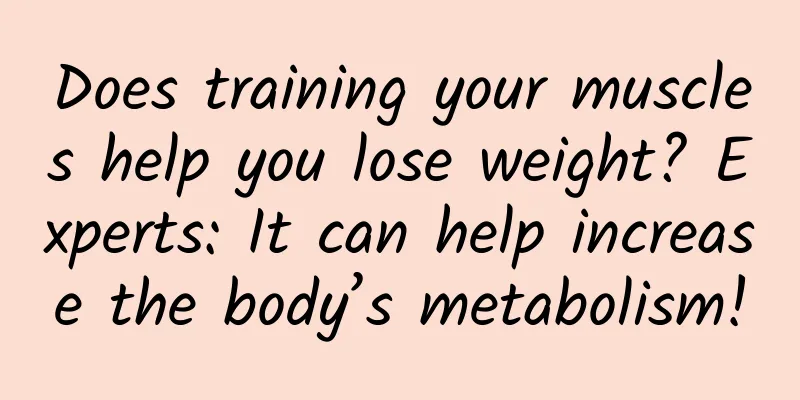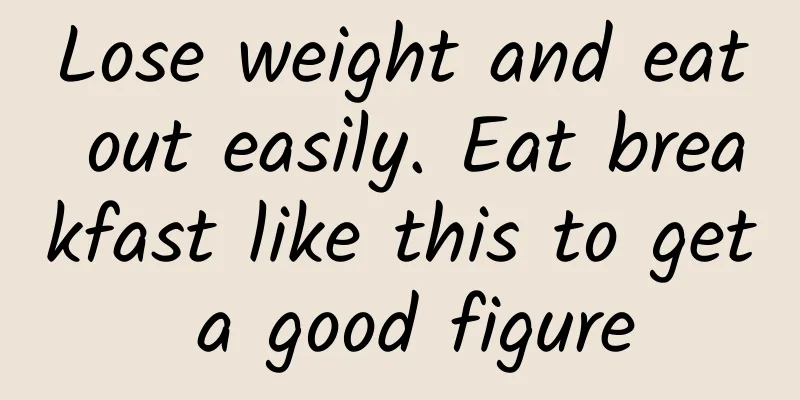Does training your muscles help you lose weight? Experts: It can help increase the body’s metabolism!

|
The key to losing weight is to achieve a balance between the calories you consume and the calories you burn. How to efficiently use up the calories from the food you eat will become the key to weight loss. If you simply think about it, if you can skip meals and reduce your calorie intake, you will lose weight. However, even if you lose weight due to dietary restrictions, you will definitely gain weight again. This is because if you don’t eat, your body’s energy metabolism will decrease. So, what exactly is energy metabolism? Our bodies consume energy not only when we are moving, but even when we are still, because of breathing or heartbeats. The consumption of energy in the body is called energy metabolism. When you are at rest, most of the energy is used to move your organs, but the metabolic rate used by muscles (skeletal muscles) accounts for about 25%, which affects the energy metabolism of the whole body. This is why metabolism decreases when muscle mass decreases due to aging or lack of exercise. On the other hand, if you gain muscle through training, your resting metabolism will increase. If you increase your metabolism while you're at rest, your calorie consumption will naturally increase even without strenuous exercise, so it will of course become easier to lose weight. In order to build a body that can use energy efficiently, moderate muscle growth is necessary. Higa-style bodyweight muscle training 2 months of muscle training will increase metabolism! When 2 months of muscle training increases metabolism by 7%, metabolism (at rest) is 150kcal/day UP. Calories burned every 20 minutes (General value for women in their 20s and 30s) When at rest………………………… 20kcal. Walking……………………..….. 50kcal. Jogging………………………….. 150kcal. Jogging (fast)………………………… 170kcal. Cycling…………………………..80kcal. Aerobic exercise (long-duration, low-intensity exercise like walking or jogging) uses fat as its primary source of energy. However, the consumption is not that much. Using muscle training to increase muscle and improve metabolism (when at rest) can be said to be more efficient. The proportion of energy consumed by each tissue in the body (resting metabolism) Skeletal muscle…………………….. 25%. Internal organs…………………………..70%. Digestive organs.................. 30%. Brain............................... 18%. Heart................................16%. Kidney................................6%. Others................................5%. When you are in a quiet state, most of your energy is used to keep your organs moving. But the metabolic rate of muscle (skeletal muscle) is about 25%, which is definitely not a small amount. If the muscle mass increases, the energy metabolism of the whole body will also increase. HIGA's Comments 150kcal of energy is equivalent to 20 minutes of jogging or 1 hour of walking. Isn't it great that a body can automatically consume the energy of this amount of exercise without doing anything? This article is excerpted from the book written by Kazuo Higa/published by Ruili Beauty International Media "My First Bodyweight Training Book: 5 minutes twice a week, -9kg in 1 month! Strength training designed specifically for women (with DVD "Move slowly and lose weight naturally") |
Recommend
What are the causes of uterine and cervical erosion? The three major causes of uterine and cervical erosion should be known
If the uterus and cervix are eroded, the patient ...
Eat less and exercise more, and you'll still be fat! 80% of cases are caused by hormone imbalance
No matter how hard you try to lose weight, your w...
What is the treatment for vulvar leukoplakia?
For our female compatriots in life, the appearanc...
Threatened abortion without bleeding test
For many pregnant mothers, threatened miscarriage...
G.E.M. reveals her lazy breakfast, replacing rice with oatmeal to lose 7 kg a year? Nutritionist says...
G.E.M., known as the "Iron Lung Queen",...
How to treat intrauterine fluid? There are 5 methods
The appearance of intrauterine fluid will definit...
What are the best dietary treatments for cervicitis in women? Women with cervicitis can try three dietary treatments
Cervicitis is a gynecological disease that is ver...
Is pelvic inflammatory disease related to lack of exercise?
Pelvic inflammatory disease can be caused by the ...
How effective is anticoagulation in treating recurrent spontaneous abortion? Learn more about it early
At present, many people in medicine will use anti...
Diagnosis of premature menopause
We must actively grasp the diagnosis and differen...
Four main tests for cervical hypertrophy
Clinically, the best way to check for cervical hy...
How to prevent the recurrence of uterine fibroids? Pay more attention to diet and rest to avoid uterine fibroids?
Uterine fibroids are a very common gynecological ...
Experts briefly describe the treatment of vulvar leukoplakia
Vulvar leukoplakia is now a very common gynecolog...
My period came one week early and I had small blood clots. What should I do?
My period came one week early and I had small blo...
What are the treatments for cervicitis?
Cervicitis is one of the common gynecological dis...





![[Video version] Do you have to sweat profusely to lose weight? Famous doctor relies on low-impact "Niya exercise" to lose weight](/upload/images/67dcfc6c85f66.webp)



